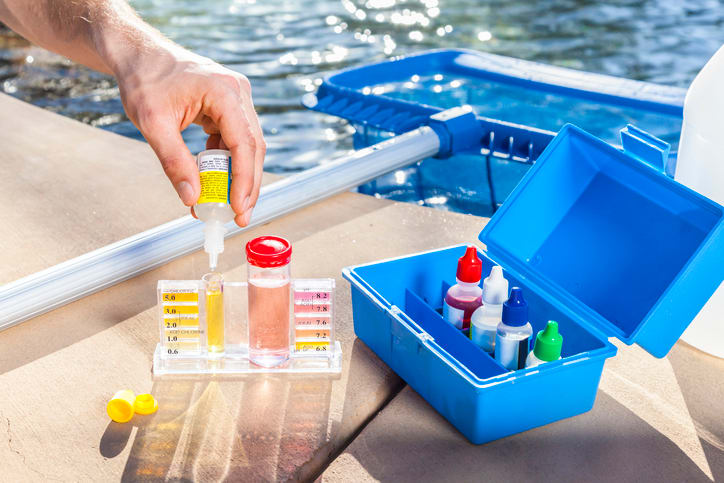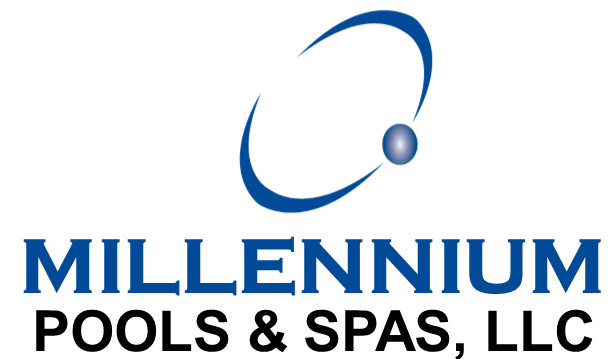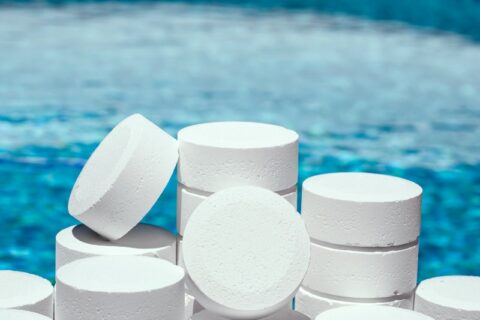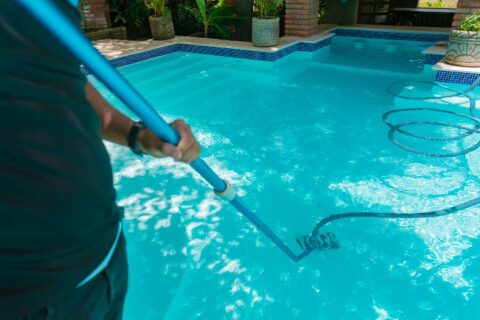Chemicals All Pool Owners Should Know

Keeping your pool clean requires more than just skimming leaves and dead bugs off the water. You must also add the right chemicals to maintain a sanitary, pH-balanced pool. Here are the chemicals required for most swimming pools.
Sanitizers
These chemicals disinfect the water by killing bacteria, viruses, algae, and other nasty microorganisms.
- Chlorine can be used in its stabilized form, or you can use unstabilized chlorine with the addition of cyanuric acid.
- Bromine is a popular chlorine alternative that works by ionizing contaminants in the water.
- Biguanide is a chlorine-free sanitizer similar to hydrogen peroxide. It forces contaminants to bind together, making them easier for the pool filter to remove.
- Minerals like silver (a bactericide) and copper (an algaecide) can be used to sanitize pool water.
Oxidizers
Oxidizers should be applied to the pool every few weeks to kill algae and bacteria. This process is known as “shocking” the pool.
- Calcium hypochlorite sanitizes the water quickly, boosting chlorine levels and killing algae.
- Potassium monopersulfate provides a non-chlorine shock without leaving residue behind, so you can swim immediately following treatment.
Water Balancers
To maintain the proper chlorine levels and pH balance, test your pool several times a week. Then, adjust as needed.
- Soda ash—not to be confused with baking soda—is a pH increaser. Use when pH levels fall below 7.2.
- Sodium bisulfate, or dry acid, is a pH reducer. Use when pH levels rise above 7.6.
- Sodium bicarbonate is an alkalinity increaser. Use when alkalinity levels fall below 80.
- Calcium chloride is a calcium hardness increaser. Use when calcium hardness falls below 150.
- Sodium thiosulfate is a chlorine neutralizer. Use if a chlorine overdose raises concentrations too high.
Specialty Chemicals
It’s useful to keep these products on hand when unexpected problems arise, or simply to keep your pool looking its best.
- Algaecides, many copper-based, help prevent green algae from growing in your pool.
- Clarifiers cause tiny particles to congeal into larger clumps that the filter can trap. Similarly, flocculants attract particles into heavy clumps that sink to the bottom where they can be vacuumed up.
- Enzymes break down oils, odors, and films on the surface of the water.
- Filter cleaners remove oils, minerals, metals, and other gunk to keep your filter working smoothly.
- Metal magnets lock up trace metals from the water, keeping them in liquid form so they don’t stain your pool.
- Phosphate removers break down phosphates, the primary food source of algae.
- Stain removers lift surface stains and scaling from pool walls.
- Tile and vinyl cleaner removes oil and grease buildup from skimmers, slides, diving boards, and around the waterline without affecting pool chemistry.
Feeling overwhelmed by all the chemicals required to keep your pool clean? Trust Millennium Pool Service to test and add chemicals to the water as needed. Contact us today in Frederick, MD or Springfield, VA to schedule pool cleaning and maintenance.


